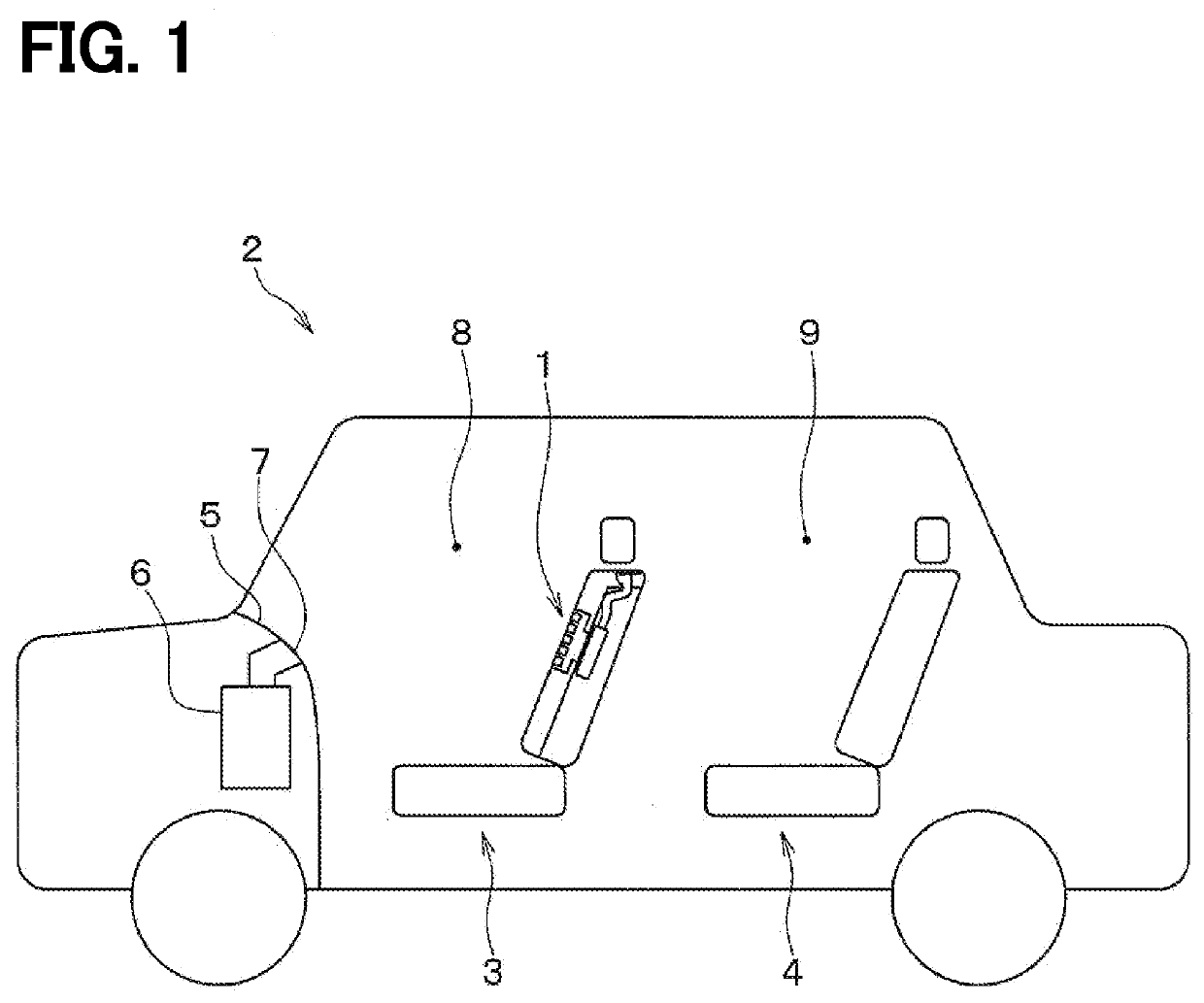Seat air conditioner
- Summary
- Abstract
- Description
- Claims
- Application Information
AI Technical Summary
Benefits of technology
Problems solved by technology
Method used
Image
Examples
first embodiment
[0029]A first embodiment will be described with reference to the drawings. As shown in FIG. 1, the vehicle 2 in which a seat air conditioner 1 of the present embodiment is mounted has two seat rows with front seats 3 and rear seats 4. The seat air conditioner 1 of the present embodiment is disposed in the front seat 3. Alternatively, the seat air conditioner 1 may be disposed in both the driver seat and the passenger seat of the front seats 3 or may be disposed in either one of them. In the following description, the front seat 3 may be referred to as a “seat,” and the rear seat 4 may be referred to as a rear seat.
[0030]A vehicular air conditioner 1 for air-conditioning a vehicle interior is disposed inside an instrument panel 5 of the vehicle 2. The vehicle air conditioner 6 draws air outside of the vehicle interior or air inside of the vehicle and blows out conditioning air having an adjusted temperature and humidity into the vehicle interior through an air outlet 7 formed on the ...
second embodiment
Modification to the Second Embodiment
[0067]In the above description of the second embodiment, the guide member 50 has the angles θ1 and θ2 at the second position within the range of 45°=θ2>=−135°, respectively. However, the rages of the angles θ1 and θ2 are not necessarily limited to this range. For example, in a modification to the second embodiment, the guide member 50 at the second position is configured to have the angles θ1 and θ2 within the range of 60°=θ2>=−120°, respectively. Further, it is more preferable that the guide member 50 at the second position is configured to have the angles θ1 and θ2 that are substantially perpendicular to the seat upper surface 18. By setting the angles in this way, it is possible to cause an angle of a mainstream of the blown air that forms the air curtain to be perpendicular to the seat upper surface 18. As a result, it is possible to enhance the function of the air curtain as an air wall that separates the front seat space 8 from the rear sea...
third embodiment
[0068]A third embodiment will be described below. In the third embodiment, an operating way of the guide member 40 is changed from the first embodiment, and the other parts are similar to that in the first embodiment, so only the difference from the first embodiment will be described.
[0069]FIG. 11 is a block diagram showing a control system of the seat air conditioner 1 according to the third embodiment. In the third embodiment, the guide member 50 is configured to be rotated by an electric motor 60 for driving the guide member.
[0070]The vehicle 2 with the seat air conditioner 1 according to the third embodiment includes a detector 70 for detecting an occupant on the rear seat 4. As an example of the detector 70, a courtesy switch that detects opening / closing of the rear door, a seat sensor disposed in the rear seat 4, an in-vehicle camera, and the like, may be used. The signal from the detector 70 is transmitted to a controller (ECU: Electronic Control Unit) 80.
[0071]The controller...
PUM
 Login to View More
Login to View More Abstract
Description
Claims
Application Information
 Login to View More
Login to View More - R&D
- Intellectual Property
- Life Sciences
- Materials
- Tech Scout
- Unparalleled Data Quality
- Higher Quality Content
- 60% Fewer Hallucinations
Browse by: Latest US Patents, China's latest patents, Technical Efficacy Thesaurus, Application Domain, Technology Topic, Popular Technical Reports.
© 2025 PatSnap. All rights reserved.Legal|Privacy policy|Modern Slavery Act Transparency Statement|Sitemap|About US| Contact US: help@patsnap.com



